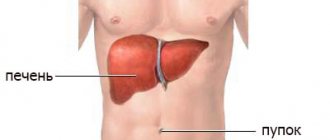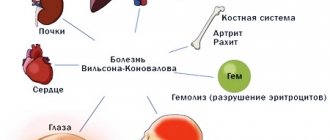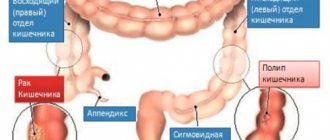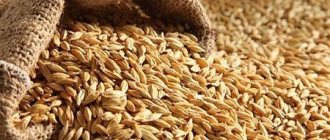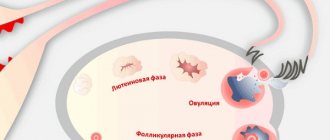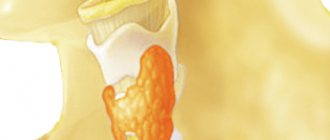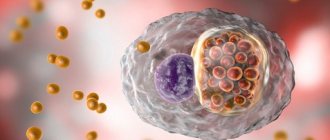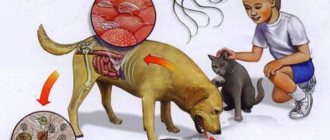Cholangitis is a liver dysfunction in which the bile ducts become inflamed.
In this case, the underlying disease is often accompanied by cholelithiasis, ulcerative colitis, and parasitic pathologies. Cholangitis was discovered in the 19th century. The study of this disease was carried out mainly by European doctors. Rapid technological progress in the 20th century made it possible for scientists to study this pathology in more detail and identify the causes of the inflammatory process. By the end of the 20th century, many effective ways to treat cholangitis appeared in medicine.
All people are at risk. This type of gastrointestinal disorder occurs in men and women of different age categories. However, most often the disease is diagnosed in women aged 50-60 years. Doctors attribute this to the fact that hormonal levels change, metabolism slows down, and the level of immunity decreases.
Definition and classification of cholangitis
The content of the article
Bile duct inflammation is a condition in which bile accumulates in the ducts inside the liver. This can damage liver cells.
Inflammation of the bile ducts
The disease comes in two forms:
- Primary biliary cholangitis is not caused by the presence of any other disease and is not a consequence of any other disease, unlike secondary cholangitis.
- secondary cholangitis - occurs as a consequence of another problem with the liver or biliary tract.
Prevention
It is much easier to prevent a disease than to deal with its consequences in the future. To prevent the development of primary or recurrent cholangitis, it is necessary to follow simple principles of a healthy lifestyle:
- to give up smoking;
- refusal to drink alcoholic beverages;
- regular exercise;
- daily walks in the fresh air;
- good sleep;
- healthy eating;
- avoidance of stressful situations.
In addition, it is recommended to systematically undergo a complete medical examination. This will make it possible to detect chronic diseases in the early stages. A preventive examination should never be neglected. It is better to spend a little free time consulting a doctor than to spend a long and tedious time treating an advanced form of pathology.
Structure of the biliary tract
We divide the bile ducts into:
- intrahepatic - built from bile ducts that form the hepatic bile ducts. Their task is to remove bile from the liver. Leaving the liver, they form one large common hepatic duct, which gives rise to the extrahepatic bile ducts;
- extrahepatic.
Structure of the Biliary Duct
The common hepatic duct after it connects with the gallbladder and exits the junction area is called the common bile duct.
Gallbladder – located under the liver, bile collects inside it. When we eat, it begins to contract, which means that bile is automatically released into the gastrointestinal tract and then enters the duodenum. Thus, inflammation develops when the flow of bile through the bile ducts is obstructed or suppressed.
Characteristic symptoms of inflammation of the gallbladder and biliary tract include:
- fever;
- chills;
- jaundice;
- pain in the right hypochondrium.
Primary inflammation of the biliary tract
Primary cholangitis can affect both intrahepatic and extrahepatic pathways and is a rare disease. This disease is also called sclerosing disease because scarring occurs in the area of the bile ducts, which lose their elasticity. The presence of scar tissue causes narrowing of the bile ducts, which in turn leads to the retention of bile in the ducts inside the liver. Treatment and prevention vary, as does prognosis.
Residual bile destroys liver cells, spreading through the liver ducts, causing cirrhosis and organ failure. The condition of liver cirrhosis is progressive and may be asymptomatic at first, so it is often diagnosed at an advanced stage. In primary cholangitis, liver function gradually deteriorates, leading to serious health consequences.
Cirrhosis of the liver
Causes
The occurrence and development of cholangitis is facilitated by two factors: stagnation of bile and the presence of infection. This combination of circumstances can be caused by the following reasons:
- Penetration of pathogenic bacteria into the bile ducts: staphylococci, Escherichia coli, pale spirochete, typhoid bacilli. Bacteria usually penetrate from the lumen of the duodenum, but sometimes this occurs through the portal vein or lymph.
- The presence of parasites in the body. Giardia, roundworms, and intestinal acne most strongly contribute to the development of cholangitis.
- Irritation of the walls by pancreatic juice.
- Autoimmune diseases. The type of disease in this case will be called primary sclerosing cholangitis.
- Anomalies in the development of the bile ducts.
- Bile duct cancer.
- Surgical interventions in this area.
Anatomy of the biliary tract
In addition to these reasons, inflammation of the bile ducts can be provoked by some viruses - for example, hepatitis C.
Symptoms
Primary cholangitis occurs in patients of any age, but is most common in people over 40 years of age. In most patients, the disease does not have any symptoms, and if so, then after a few weeks or even months.
Symptoms include:
- weight loss;
- general malaise;
- constant fatigue;
- unbearable itching of the skin;
- jaundice (occurs when the patient’s condition is very serious).
Unbearable itching of the skin
Time of incapacity
Since the vast majority of patients with cholangitis are students or able-bodied people, this issue needs to be given attention. In the acute case, the length of stay in the hospital is 10-30 days, depending on the person’s condition and the activity of the disease. After discharge, the sick leave/certificate is extended for 20-30 days to continue treatment at home and restore the body.
As for chronic cholangitis, at the moment, there are no clear recommendations. In each case, the doctor himself determines the duration of the patient’s disability, depending on his well-being and the possibility of therapy.
Complications of primary biliary cholangitis
A complication of this disease may be a deficiency of vitamins A, D, E and K. Usually the body digests them along with fats, but in the absence of bile, which digests fats from food, the absorption of vitamins from the gastrointestinal tract is blocked.
Bile remaining in the bile ducts can become infected. The patient then develops a high fever, chills and abdominal pain. The disease can lead to liver cirrhosis, the only effective treatment for which is transplantation. In addition, some may develop liver failure, and ten percent of patients may develop liver cancer, which has a very poor prognosis.
What is this pathology?
Cholangitis is a liver dysfunction in which the bile ducts become inflamed. In this case, the underlying disease is often accompanied by cholelithiasis, ulcerative colitis, and parasitic pathologies. There are two forms of cholangitis: acute and chronic. Each of them is dangerous in its own way.
Acute brings severe discomfort and pain. The attack can be so severe that the patient loses consciousness. The chronic form occurs with mild symptoms, however, it slowly affects most of the bile ducts in the liver and beyond.
Cholangitis was discovered in the 19th century. The study of this disease was carried out mainly by European doctors.
Rapid technological progress in the 20th century made it possible for scientists to study this pathology in more detail and identify the causes of the inflammatory process.
By the end of the 20th century, many effective ways to treat cholangitis appeared in medicine.
All people are at risk. This type of gastrointestinal disorder occurs in men and women of different age categories. However, most often the disease is diagnosed in women aged 50-60 years.
Doctors attribute this to the fact that hormonal levels change, metabolism slows down, and the level of immunity decreases.
Additional risk factors are:
- unbalanced diet;
- insufficient sleep;
- exposure to stress;
- unfavorable environmental situation in the place of residence;
- smoking;
- alcohol abuse.
The key to successful treatment is timely access to the hospital . If any abnormalities are detected that indicate the possible presence of cholangitis, the patient should urgently visit a therapist or gastroenterologist.
Diagnosis of cholangitis
Primary cholangitis is often discovered by chance during an examination because it usually does not cause any symptoms at first. The most important diagnostic test is a blood test, which helps assess liver enzyme levels. Patients with primary cholangitis have significantly elevated AST, ALP, ALT and GGTP enzymes, as well as bilirubin levels.
Blood test to diagnose cholangitis
ERCP (retrograde cholangiopancreatography) is considered a test that clearly helps diagnose the disease. This is a visual examination in which the doctor inserts a tube through the mouth, then through the esophagus into the stomach. The tube is then directed to the duodenum, where there is a papilla with an opening into which the bile and pancreatic ducts exit. The doctor gives contrast to the bile duct through the nipple to be able to better visualize the course of the bile duct. Then (after contrast injection) an X-ray examination is performed, which perfectly illustrates any narrowing or expansion.
Important! If contrast injection is contraindicated, the physician will order repeat imaging with magnetic resonance imaging.
If cirrhosis is suspected, a liver biopsy is performed.
Treatment of primary cholangitis
Therapy for primary cholangitis is based mainly on dilating bile duct strictures. An endoscopic method using ERCP is used for this. Liver transplantation is the only effective treatment for some patients, especially if the inflammation recurs and treatment does not provide the expected benefit. Unfortunately, even after a transplant, inflammation can attack again.
Liver transplantation
Warning! To perform a transplant, certain conditions must be met!
Moreover, treatment can be symptomatic. In addition to relieving itching, the patient also takes painkillers.
Forecast
With cholangitis, the prognosis depends on its type. And also on the course of the disease and the causes of its occurrence. The most severe prognosis is observed with a purulent course of the disease.
The purulent course of the disease is the most severe pathology. Including the worst prognosis for systemic damage to the abdominal organs. Especially with liver damage. And also with the development of peritonitis.
The prognosis is best with timely treatment of the disease. Timely therapy allows you to achieve recovery results. But with relapses and progression of the disease, the prognosis worsens.
go to top
How does infection occur?
Bacteria enter the digestive system when we eat contaminated food and then travel through the bile ducts to the liver. In addition, infection can occur due to the presence of parasites in the liver in the form of human roundworm or liver fluke (usually rare cases of infection).
Some parasites cause narrowing of the bile ducts and stagnation of bile at the same time. Other causes of bile flow problems include:
- narrowing of the bile ducts due to inflammation in the liver or bile ducts;
- narrowing of the bile ducts due to liver surgery;
- cholelithiasis;
- the use of certain medications (in psychiatry) can also damage the biliary tract.
Cholelithiasis
How does secondary cholangitis manifest?
Patients with secondary cholangitis may experience:
- heat;
- chills;
- pain in the upper abdomen (right or middle).
High fever
Inflammation of the bile ducts can be very dangerous as it can lead to life-threatening septic shock in some cases. In patients whose inflammation is of bacterial origin, many toxins produced by foreign bodies multiply in the body. Sepsis not only causes life-threatening complications, but also significantly impairs the functioning of vital organs. Any untreated septic shock will result in death!
Lifespan
Life expectancy is also influenced by the course of the disease. With the progressive course of cholangitis, life expectancy decreases. And the chronic stage of the disease leads to disability.
The patient's disability not only reduces the quality of life. But it also leads to various complications. Most often, disability is associated with complications. For example, in connection with the development of liver cirrhosis.
Life expectancy is influenced not only by treatment, but also by lifestyle changes. Including compliance with personal hygiene rules. If the patient follows the doctor’s recommendations and strictly follows them, this improves not only the quality of life, but also its duration!
Diagnostics
Doctors order blood tests and imaging to diagnose secondary cholangitis. The first of them reveals an increased concentration of liver enzymes such as ALP, AST, ALT or GGTP, an increase in bilirubin and leukocytes, which have the body's protective properties against infection by viruses and bacteria.
In turn, the imaging test performed in diagnosis is ERCP (endoscopic retrograde cholangiopancreatography), which combines endoscopic and radiological methods.
How to treat cholangitis?
Treatment is based primarily on proper nutrition. Patients hospitalized for secondary cholangitis are rehydrated using drip irrigation. In addition, they are given antibiotics.
Some patients may require surgical treatment with ERCP to dilate the bile ducts.
ONLINE REGISTRATION at the DIANA clinic
You can sign up by calling the toll-free phone number 8-800-707-15-60 or filling out the contact form. In this case, we will contact you ourselves.
If you find an error, please select a piece of text and press Ctrl+Enter


